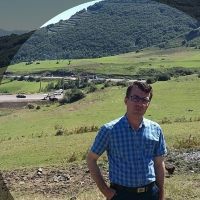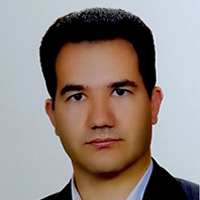Evaluation of the effects of urban development on the quantity and quality of surface and groundwater in Ardabil plain
Considering the different hydrological, hydraulic and environmental behaviors of the urban area compared to other natural areas, the effects of urban expansion on the response of the natural hydrologic cycle components, and available water resources in particular are among the most important research topics of the last decade. Limited water resources have made water an economical and valuable commodity. Groundwater is at risk of pollution as the population grows and urban, industrial and agricultural activities increase. In Iran, groundwater has a 60% portion in drinking water supply in most cities. Using conventional methods to assess the quality of groundwater aquifers is time consuming and costly, so geostatistical methods can be used due to their good capabilities and acceptable accuracy of estimates. Urban sprawl is the most important type of land use change or land cover in which artificial and impermeable pavements, such as roofs, streets, sidewalks, roads, replace natural and permeable pastures, forest, and agricultural lands. Therefore, it is necessary to plan and implement various urban development projects as well as management strategies for water resources in urban areas. In this regard, and according to the importance of the issue, the effects of urban development on the quantity and quality of surface water and underground water resources were examined in this study. The main objective of this research is to investigate the effects of physical and demographic development of the Ardabil city in recent decades on the quantity and quality of surface-groundwater resources.
This research was carried out in main following stages. The urban development in Ardabil were assessd using Landsat Imagery and RS technique. In this study, determining the trend and extent of urban development in Ardabil over a period of 30 years (1986 to 2016) was evaluated. Classification of satellite images have been done using maximum likelihood method in ENVI software to determine the urban area of Ardabil in different years. In this regard, 7 time periods from 1985 to 2015 with 5-year intervals were selected and Landsat 7 images in June 1985. Images of Landsat 7 ETM+ in May 1990, May 1995, June 2000, June 2005, July 2010 and May 2015 were also obtained from the USGS site. The changes in surface water quality and quality were examined using the water quality diagrams. The quantity and quality of groundwater variations were determined using spatial interpolation methods. Finally, the effects of urban development and population growth were analysed on the changes of surface and underground waters during the studied years. The GIS, GS+, ENVI, EXCEL, AquaChem software were employed in the different steps of the study.
The results of the urban development showed that the urban area of Ardabil city had increased over the past 30 years with 3284 hectares and the population growth rate was 861705. The flow rate and volume of surface water resources had decreased and the trend of pollutants were increased. The results show that the average daily flow in the river over time for both hydrometric stations has been declining over the past 30 years. In general, it can be said that according to the Schuler diagram (drinking water), the condition of Pole-almas hydrometric station is in a unsuitable condition with respect to Gilande hydrometric station. The water quality of Gilande hydrometric station is in the C2S1 class at all time intervals. The amount of groundwater resources decreased by 46%. Meanwhile, the groundwater quality of piezometric stations was in a good condition based on the groundwater quality parameters. The pH of groundwater in the study area fluctuates between 7.2 to 7.5. In terms of acidity of groundwater resources in Ardabil is in good condition and the lowest pH amount is assigned to the western regions of the study area, and the highest is in the eastern parts. The highest value of EC is in the eastern and northern regions, and fluctuates between 852 and 1660 μm in the study area. The concentration of soluble substances in the study area fluctuates between 424 to 1120 mg / l on average. This value is less than 1000 mg / l in the northern regions of the region and shows that the level of TDS in the northern regions is in the acceptable and good category (according to Schuler diagram). The interpretation of the Wilcox diagram (agriculture and industry) show the desired level of water quality. Also the parameter of sodium absorption ratio (SAR) that the highest amount of SAR is 3.5 and the minimum is 2.2. The amount of sodium in groundwater in Ardabil in the northern and northwestern parts of the plain is less than other areas, but in general the ratio of sodium absorption in the plain is less than 10 and is desirable for agriculture. The highest amount of SAR in Ardabil can be seen in the southern and southeastern parts of the city.
The dramatic increase in urban expansion in the southwest and northwest areas of Ardebil city is due to the existence of a river, the presence of Shorabil lake, Mehr residential complex and university offices. In general, it can be said that the quality of groundwater resources in Ardabil is currently in good condition and in the near future, if comprehensive management and planning is not on the agenda of the relevant factors, groundwater resources in Ardabil will experience unfavorable conditions. The most important reason is that the development of the sewage network has reduced the entry and penetration of pollutants into groundwater through absorption wells, but the most important suggestion is to use new urban runoff management techniques, because it leads to increased permeability and increased groundwater recharge. As a result, the quality of urban runoff is improved. Urban runoff can also be stored, which reduces municipal runoff and can be used for non-drinking purposes such as washing, irrigation of green spaces. In conclusion, population growth along with the decrease in the quantity of surface water resources can be attributed to the influence of rainfall decrease, consecutive drought events, and rising exploitation of water resources, have affected surface water and underground water resources quality and quantity. Reducing the quality of surface and underground water resources in the studied area requires management and comprehensive planning to maintain and sustainable use of these resources.
- حق عضویت دریافتی صرف حمایت از نشریات عضو و نگهداری، تکمیل و توسعه مگیران میشود.
- پرداخت حق اشتراک و دانلود مقالات اجازه بازنشر آن در سایر رسانههای چاپی و دیجیتال را به کاربر نمیدهد.




